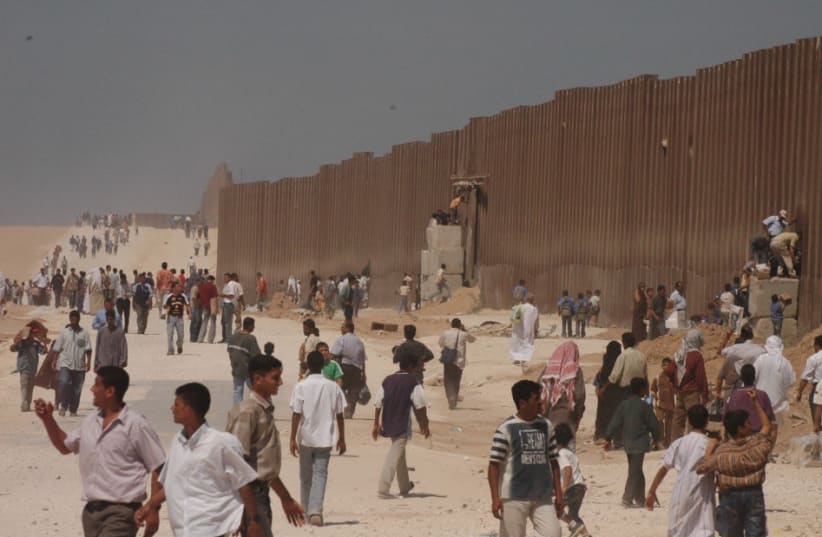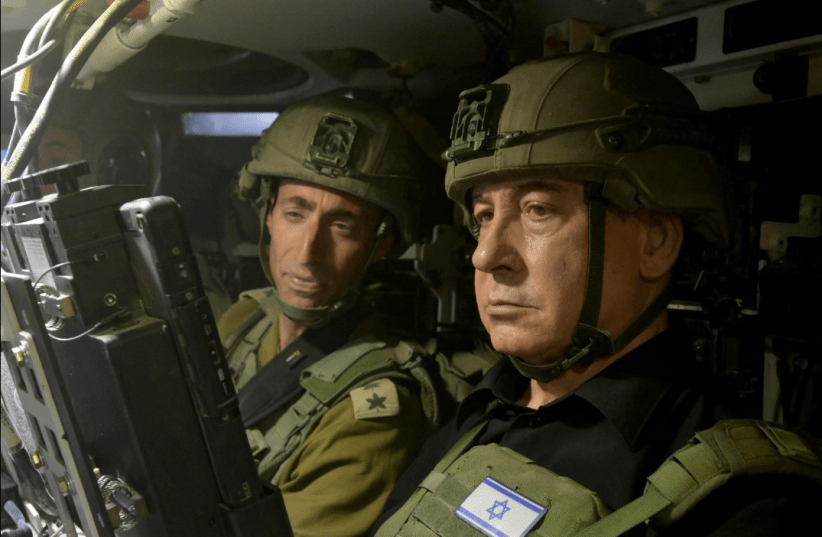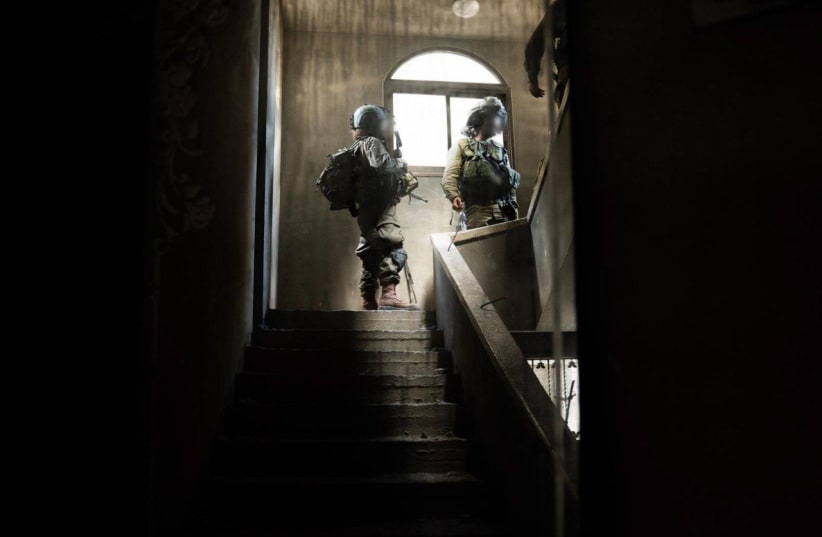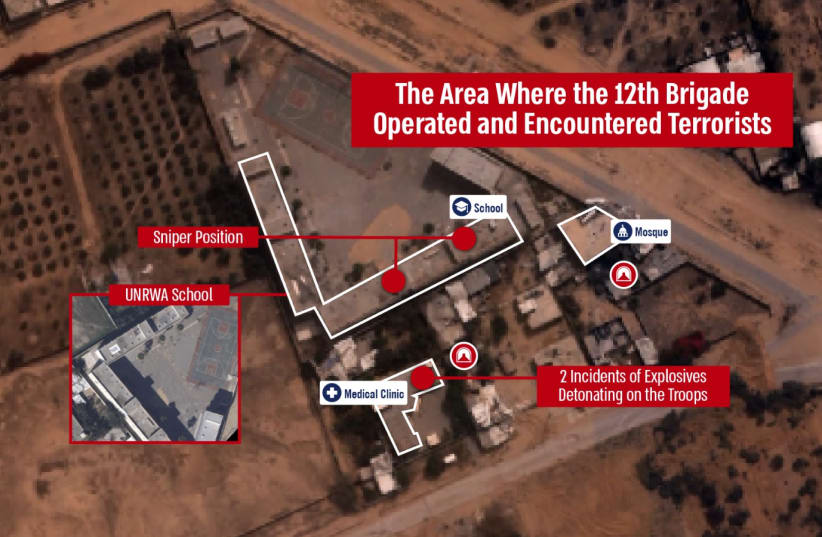Opinion
The takeover of the Philadelphi Corridor is a knockout for Hamas, there is also bad news – opinion

For Hamas – as long as the Corridor was active, it and the area adjacent to it would function as the organization’s “strategic depth” – a sort of city of refuge.
Good news – the IDF announced it has gained operational control of the Philadelphi Corridor. During the takeover, 20 tunnels crossing from Egypt to the Gaza Strip were located, as well as 82 underground shafts situated near the Corridor, which will be explored in the coming days.

It was also discovered that Hamas placed dozens of rockets, some of them long-range, at ranges of only 10-40 meters from the Corridor, intending to prevent Israel from attacking so close to the Egyptian border.
Some will disagree with me, but in my opinion, this is Israel’s first significant strategic achievement in this war, a shame that our operational planners did not take care to achieve it at the beginning of the ground maneuver.
This is also the strategic turning point in the campaign in Gaza. It can be said, without exaggeration, that the Philadelphi Corridor was Hamas’s “strategic depth,” “city of refuge,” and “granary,” all at the same time, and the central anchor for everything we call the Hamas administration in the Gaza Strip.
The occupation of the entire Corridor, with the exception of a small supplement still required in the area near the Mediterranean coast, is a physical but also a mental move that has far-reaching implications for Hamas’s survival, the conduct of the war, and Egypt’s role.

For Hamas – as long as the Corridor was active, it and the area adjacent to it would function as the organization’s “strategic depth” – a sort of city of refuge.
It was clear to Hamas that the war would end with it bruised and geographically reduced but surviving in an area where the IDF would not enter. If Hamas’ efforts to stop the war were successful, then the supply of weapons and ammunition to continue the war and restore its military power would definitely be possible.
This, while at the same time, many of the civilian goods that entered through this corridor arrive via the highway via humanitarian aid to the Gaza Strip, thus freeing up time and space in the tunnels for managing the supply of the supplies in Hamas’ possession – and we have already seen that money was not a factor.
Now, “the faucet is turned off.” It will take some more time, but it will be possible to see the pressure of Hamas increasing. At first gradually, and then exponentially.
An aggressive “weapons economy” will be activated, and this will come very close, perhaps more than any military move from which it can be recovered, to the dismantling of Hamas as a government-ruling system, and perhaps even paves the way for a new hostage deal under improved conditions.
The relationship with Egypt
For many years, but even more so during the war, Egypt had to wear three hats.
The first hat, officially – is as a border state with official levers of pressure on Hamas (Rafah crossing), an ally of Israel and the US and a partner of Israel in the regional strategic vision and policy towards Gaza.
The second hat, officially – is as an “objective” mediator in the negotiation efforts with Hamas and a “natural” partner in trying to define “the day after.”
The third hat, unofficially – under Israel’s nose, it enables an entire industry of smuggling tunnels from its territory to the territory of the Gaza Strip and, in practice, constitutes the organization’s “oxygen pipe” and a main source of illegal weapons, ammunition, and prohibited materials that enabled the establishment of “Deep Gaza.”
The highlight was the existence of an overpass between Egypt and Gaza – the Salah al-Din crossing that was used for the movement of goods from Egypt to the Gaza Strip without any Israeli or international supervision. It was not widely publicized and operated in addition to the famous Rafah crossing.
Apparently, the economy of the tunnels/goods/crossings and the industry that developed on Egyptian soil contributed quite a bit to the quiet that Egypt asked to preserve in the Sinai Peninsula, and hence the Egyptian interest in not eliminating it, as Egypt knew how to do in many other cases.
Now, the IDF has violated that quiet in the Philadelphi Corridor, and has returned to control the Gaza side, while beginning to publicly expose the conduct in the Corridor for years and the responsibility that Egypt has on the other side of the border, and its actual contribution to the power and status of Hamas – even if it is a passive contribution that has zero interest to act.
This is probably also the reason for the very loud Egyptian opposition in recent weeks to the Israeli operation in Rafah.
What now?
As for the “day after,” Israeli control over the Corridor is the first step in the ability to separate the Gaza Strip from the IDF and in the ability to establish Israeli security control in the Strip.
This is a first-rate strategic lever that places Israel in a different place, significantly improved, in the discussions that will take place on “the day after” and on the role of civilian and international bodies, including Egypt’s role as an essential ally of Israel and the demands from it as a neighboring country within the framework of written agreements backed by the US and the international community, which for some reason have so far refrained from mentioning Egypt in the context of Gaza and refrained from exerting pressure on it to close the “oxygen pipeline” to Hamas passing through its territory.
At the same time, the military effort and the IDF’s takeover of the Philadelphi Corridor do not stand alone, and now it is necessary to act in parallel and combined efforts.
First of all, to photograph and show the world, with an emphasis on the US, what the Philadelphi Corridor is. To show the tunnels passing from Egypt to the Gaza Strip and the “quiet” Salah al-Din crossing as an essential part, like no other, for continued Israeli security control of the route, from the other side also for Gaza.
There is no doubt that the closure of the Corridor will sentence Hamas to an “arms economy” and, as time goes by, will limit its ability to respond with fire.
Precisely at this point, it is very essential to start pushing his ruling foot, to activate the civil effort in the north of the Gaza Strip and to take responsibility for the distribution of humanitarian aid and for the creation of humanitarian bubbles in which Hamas is no longer relevant.
This strategic turning point in the war in the Gaza Strip is significant and will allow Israel, for the first time, to begin directing time, attention, and resources to other arenas.
Lt.-Col. (res.) Amit Yegur is the former deputy head of the Palestinian arena in the planning division of the IDF and a former senior officer in Naval Intelligence.

























